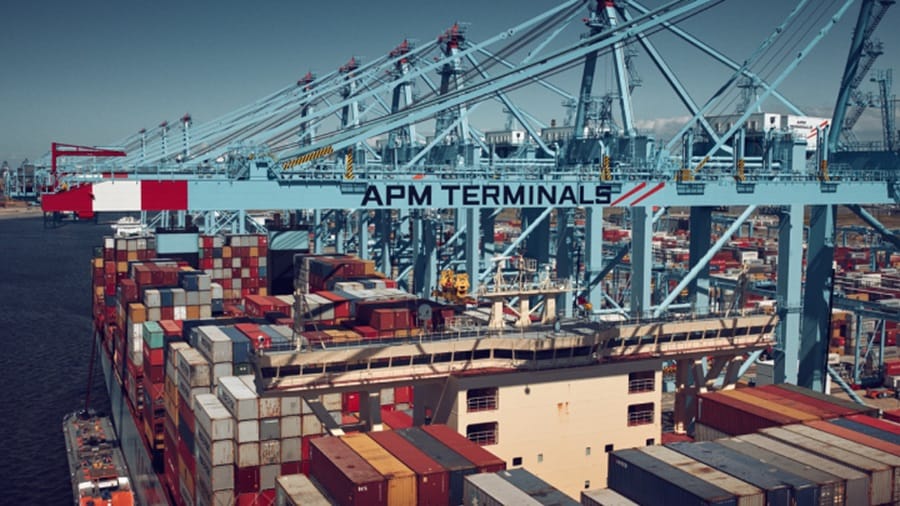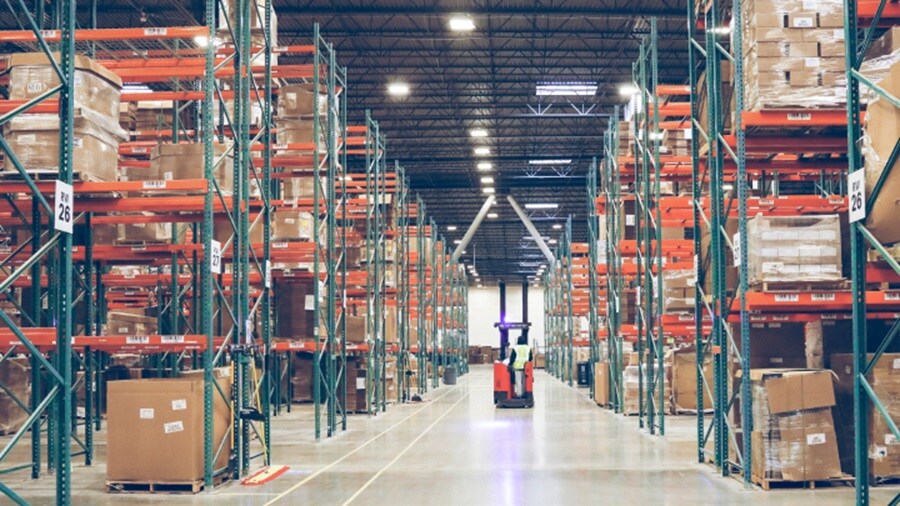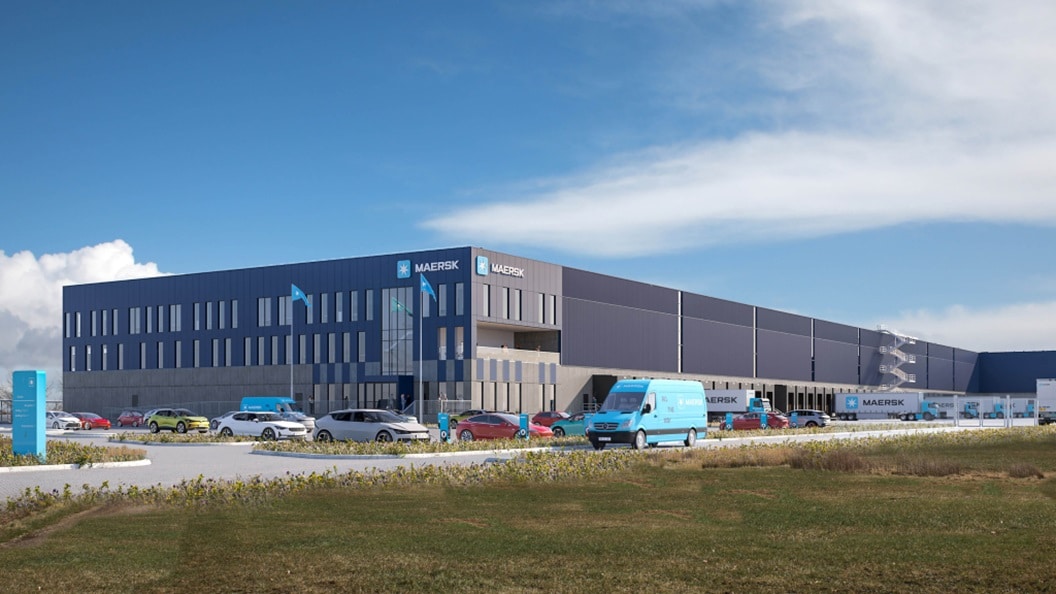To cater to market needs, businesses trading globally must consider wide-ranging factors and remain agile in responding to market demand.

Maersk has identified the areas where action can be taken to improve outcomes for businesses. A new warehouse site in Rotterdam, uniquely located within APM Terminals’ facility at Maasvlakte II, is set to offer advances for the global trade community.
There are many warehouses across Europe, but few are operating together to form an integrated solution for the global trade community. The new cross-dock warehouse in Rotterdam is poised to solve several challenges, along with many others, to deliver significant improvements in efficiency, reliability and flexibility for businesses trading globally.

The current situation
The Port of Rotterdam is one of the largest and busiest in the world. It provides a major gateway to Europe, handling some of the largest container ships in the world and boasting some of the most advanced technological solutions for its users.
Currently, trading pathways for a wide variety of business segments will likely feature the Port of Rotterdam as a touchpoint in their journey. This wide variety of businesses experience different challenges in their supply chain.
Retail businesses with an omni-channel distribution model might experience unpredictable demand, leading to additional costs and reliance on ad-hoc contingency solutions. Lifestyle businesses supplying major retailers will work through seasonal peaks in inventory, juggling bottlenecks in warehouses which increase costs, see a likelihood of lost sales and delays. Technology businesses may find themselves challenged by higher inventory and therefore carry costs along their supply chains.
The issues above aren’t exclusive to the trade sectors mentioned but serve as examples pointing to typical experiences in the global trade market.
The world is moving quickly in many directions and trading businesses need forward-thinking, solid solutions which enable greater resilience and ability to thrive under complex circumstances.
Building strategic advantage
Why Rotterdam?
The new cross-dock warehouse is being built at the APM Terminal facility at Maasvlakte II within the Port of Rotterdam for many crucial reasons, including:
- Connectivity - The port is located at the mouth of the Rhine-Meuse-Scheldt river delta, making it a natural gateway to and from Europe. This gateway links to an extensive network of road, rail and inland waterway connections that reach deep into the European hinterland. Combined with the advanced infrastructure in place for various modes of transportation, including container terminals, bulk terminals and specialised facilities for handling different types of cargo, the port can adapt and meet the needs of ambitious customers.
- Technological and operational efficiency - The port has adopted a number of digital solutions that improve the speed and reliability of cargo handling. This includes cargo tracking and automation, with its size and advancements enabling the port to offer economies of scale for shipping lines and logistics companies. These advances have moved into the world of decarbonisation too, with promotion of fuels and technologies that reduce greenhouse gas emissions.
- Industrial advantage - Rotterdam is surrounded by numerous industrial clusters, including petrochemicals, manufacturing and distribution centres. This proximity to major industries facilitates the efficient movement of raw materials and finished goods, whilst the port’s role as an energy hub increases the energy security for businesses across the continent.

Change on the horizon
With the location of the cross-dock warehouse facility set, development is well underway, and the warehouse will be open for business from early 2024. There are several transformational benefits to come with this launch, adding value and reducing costs for businesses.
Speed to market, predictability and cost
Since the warehouse is located at the APM terminal, businesses can markedly speed up their supply chain and bring their products to market faster and more efficiently. Rather than moving the container inland or to another country first, the operation can be handled on the terminal, mitigating onward risk.
Roads and rivers along the main networks of Europe are congested. So, the new warehouse facility means containers don’t have to go all the way inland, the cargo will be unloaded from the container on site and then transported on a regular truck, rather than as a container on a chassis. This reduces congestion and improves efficiencies.
The further away you move from a deep seaport, the higher the chances are of things going wrong. Handling operations at the terminal therefore improves reliability and predictability for businesses and reduces the need for buffers in the supply chain.
Combined with increased reliability and capacity, businesses can improve the predictability of their supply chain and strengthen their flexibility.

Making room for more
The cross-dock warehouse caters to the reality of working within the global trade infrastructure and looks ahead to the future needs of this community.
A common issue for businesses is the management of overflow warehouse requirements. Businesses can find themselves with too much cargo coming in and not enough warehouse capacity. This is being addressed with businesses being provided with the ability to use Maersk’s on-site warehouse.
The seamless transfer of the container out of the terminal into a warehouse simply doesn’t exist anywhere in Rotterdam today.
The interconnection between terminal and warehouse provides swift and efficient movement from between the two. With physical proximity and digital advances, efficiencies are drastically increased.
Driving change
The cross-dock warehouse enables a truly integrated strategy – as the container moves beyond the seas and on to the shores, efficiencies will be felt and concerns for future resourcing will progressively be reduced.
With an ageing workforce driving trucks throughout Europe, alternative infrastructures with different modes of transportation available are vital for future-proofing the world of logistics and trade.

Visibility and control
The unique setup of the warehouse further increases Maersk’s overview of the complete supply chain and the customer’s potential to respond and direct the flow of their supply chain. Businesses can manage the majority of their supply chain through one point of contact and access live data to make well-informed business decisions.
Visibility and direct control, along with the incoming refrigerated storage capacity, will mean businesses save time and money and achieve never seen before logistical advantages.
The icing on the cake
As of Q3 2024, the cross-dock warehouse will receive a new neighbour in the form of Maersk’s refrigerated storage facility. With these two positioned next to each other, customers can gain efficiencies and improved synergies.
Summary
Maersk’s cross-dock warehouse brings exciting developments for a huge number of businesses moving goods globally. Whether future-proofing operations or capitalising on market opportunities, the advantages that will be felt in 2024 and beyond are significant.
While work continues to move the operation at Rotterdam forward, Maersk continues to invest in other ports, giving businesses options in the setup and management of their supply chain.
Wherever your business may be looking to move goods, Maersk’s operations focus on innovation and reliability to deliver the very best based on the needs of your business and customers.
For more information on our new Rotterdam warehouse, please contact us.
无论您需要什么,我们都可以随时为您提供帮助
I agree to receive logistics related news and marketing updates by email, phone, messaging services (e.g. WhatsApp) and other digital platforms, including but not limited to social media (e.g., LinkedIn) from A. P. Moller-Maersk and its affiliated companies (see latest company overview). I understand that I can opt out of such Maersk communications at any time by clicking the unsubscribe link. To see how we use your personal data, please read our Privacy Notification.
By completing this form, you confirm that you agree to the use of your personal data by Maersk as described in our Privacy Notification.
